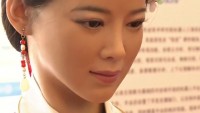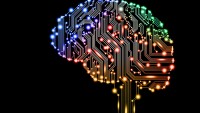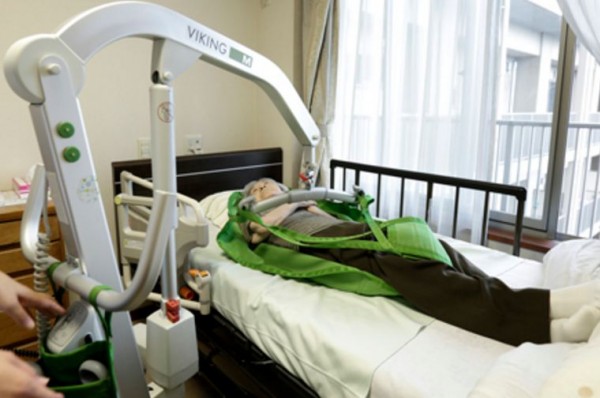Robotics Roadmap Shows Way Forward for US in the Trump Years
| Arthur Dominic Villasanta | | Nov 14, 2016 04:15 PM EST |
(Photo : Getty Images) Robotic arm places a patient on a hospital bed.
Experts in robotics from the scientific community, the academe and private business have together crafted "A Roadmap for US Robotics: From Internet to Robotics" to guide the Trump administration on a field that presents a huge opportunity but is a source of grave danger to U.S. employees.
Like Us on Facebook
The 2016 edition of the Roadmap for Robotics, the latest in a series, is a 100-page report with inputs from 150 experts outlining the future of the robotics industry in the United States. It reveals the paths the robotics industry should take and what types of technologies Congress should invest in.
The report noted a significant growth in adoption of robot systems in industry even as manufacturing has added 600,000 jobs over the past six years. It said the past three years have seen quarter-by-quarter records in sales of robot systems for use in manufacturing.
"The USA has never utilized as many robots as they do today," said the report.
The report said a major new application domain has been in the adoption of "collaborative robots" that can operate side-by-side with humans. This trend is being aided by the adoption of new standards (ISO 10218 and ISO/TS 15066) that have provided a framework for how to design systems that easily can be adopted for a diverse set of tasks in a cost-efficient manner.
Logistics is seeing major growth in robotic systems. E-commerce is seeing annual growth rates in excess of 40% with new methods all driving new adoption of technology.
The report noted UPS' experiment in using Unmanned Vehicles for last mile package delivery. But for handling of the millions of different everyday objects "there is a need of have robust manipulation and grasping technologies but also flexible delivery mechanisms using mobility platforms that may drive as fast as 30 mph inside warehouses."
Big sales item for the home market has been vacuum and floor cleaners. U.S. consumers are now starting to see the introduction of home companion robots.
A new generation of autonomous systems are also emerging for driving, flying, underwater and space use. For autonomous driving it is important to recognize that human drivers have a performance of 100 million miles driven between fatal accidents.
"It is far from trivial to design autonomous systems that have a similar performance. For aerial systems the integration into civilian airspace is far from trivial but it does offer a large number of opportunities to optimize airfreight, environmental monitoring."
Opportunities lie in new research and development in multi-robot coordination, robust computer vision for recognition and modeling and system level optimization.
For space exploration, robots will land on asteroids for sample retrieval. For many of these tasks the core challenge is the flexible integration with human operators and collaborators.
The Internet of Things movement will facilitate the introduction of increased intelligence and sensing into most robot systems and will see a significant improvement in user experience.
The design of these robust, scalable and interoperable complex systems is far from trivial, and there are now new methods for systems design and implementation from macroscopic to basic behavior.
Congress should invest in robotics for use in the manufacturing industry that are highly intuitive and require little training.
TagsA Roadmap for US Robotics: From Internet to Robotics, Robotics, robotics industry, United States
©2015 Chinatopix All rights reserved. Do not reproduce without permission
 China now World Leader in Industrial Robot Production; also Leads in ‘Service Robotics’
China now World Leader in Industrial Robot Production; also Leads in ‘Service Robotics’ DARPA Robot Submarine Killer Warship called ACTUV gets a ‘Spy in the Sky’
DARPA Robot Submarine Killer Warship called ACTUV gets a ‘Spy in the Sky’ London Conference to Titillate with Talks about Robot Sex and ‘Sexbots’
London Conference to Titillate with Talks about Robot Sex and ‘Sexbots’ Study Examines how Artificial Intelligence Might Affect Urban Life in 2030
Study Examines how Artificial Intelligence Might Affect Urban Life in 2030
EDITOR'S PICKS
-

Did the Trump administration just announce plans for a trade war with ‘hostile’ China and Russia?
-

US Senate passes Taiwan travel bill slammed by China
-

As Yan Sihong’s family grieves, here are other Chinese students who went missing abroad. Some have never been found
-

Beijing blasts Western critics who ‘smear China’ with the term sharp power
-

China Envoy Seeks to Defuse Tensions With U.S. as a Trade War Brews
-

Singapore's Deputy PM Provides Bitcoin Vote of Confidence Amid China's Blanket Bans
-

China warns investors over risks in overseas virtual currency trading
-

Chinese government most trustworthy: survey
-

Kashima Antlers On Course For Back-To-Back Titles
MOST POPULAR
LATEST NEWS
Zhou Yongkang: China's Former Security Chief Sentenced to Life in Prison

China's former Chief of the Ministry of Public Security, Zhou Yongkang, has been given a life sentence after he was found guilty of abusing his office, bribery and deliberately ... Full Article
TRENDING STORY

China Pork Prices Expected to Stabilize As The Supplies Recover

Elephone P9000 Smartphone is now on Sale on Amazon India

There's a Big Chance Cliffhangers Won't Still Be Resolved When Grey's Anatomy Season 13 Returns

Supreme Court Ruled on Samsung vs Apple Dispute for Patent Infringement

Microsoft Surface Pro 5 Rumors and Release Date: What is the Latest?










